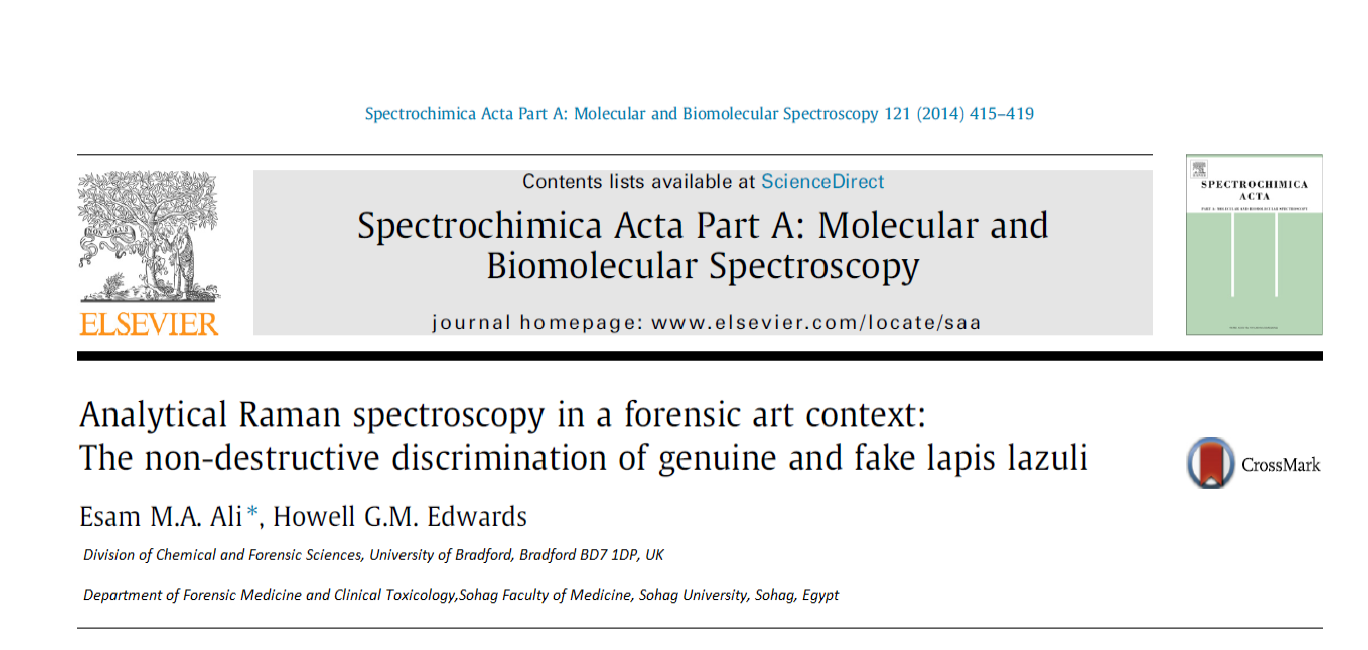The differentiation between genuine and fake lapis lazuli specimens using Raman spectroscopy is assessed using laboratory and portable instrumentation operating at two longer wavelengths of excitation in the near-infrared, namely 1064 and 785 nm. In spite of the differences between the spectra excited here in the near infrared and those reported in the literature using visible excitation, it is clear that Raman spectroscopy at longer wavelengths can provide a means of differentiating between the fakes studied here and genuine lapis lazuli. The Raman spectra obtained from portable instrumentation can also achieve this result, which will be relevant for the verification of specimens which cannot be removed from collections and for the identification of genuine lapis lazuli inlays in, for example, complex jewellery and furniture. The non-destructive and non-contact character of the technique offers a special role for portable Raman spectroscopy in forensic art analysis.


